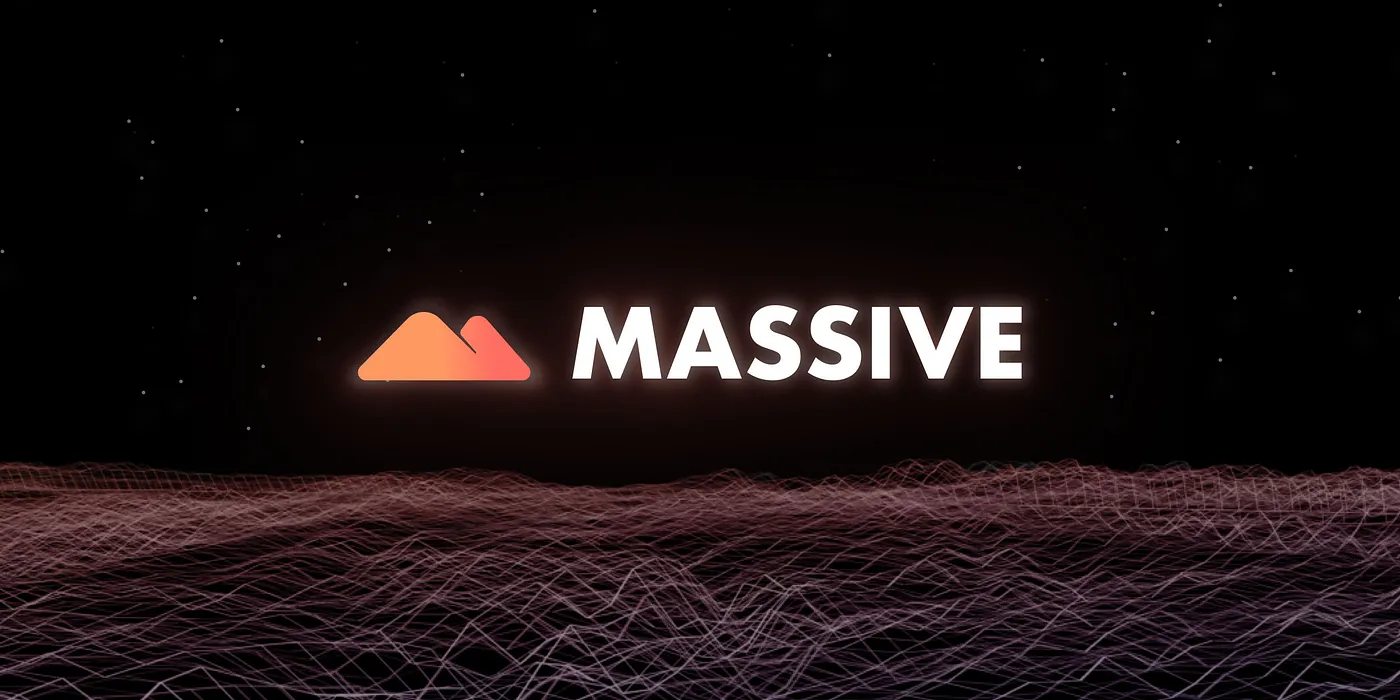Using online apps and websites has turned into an attention-grabbing, emotion-manipulating, privacy-violating experience that even the web’s creator regrets¹ and the reason is a monolithic business model that incentivizes these qualities.
What if, rather than being forced by internet advertisers to pay with your brainpower, you could choose to pay with power of a sort that’s much less personally valuable and that almost everyone in the world has access to²: your computer or mobile device’s idle processing power?
Here’s how an alternative business model for the internet might work and what my team and I are building as a possible foundation.
My backstory
I’ve been an indie developer for most of the last decade and launched or helped launch more than 30 desktop, mobile, and browser apps in that time. The majority didn’t get much traction, but 7 of my apps have gone on to hit 1 million active users.³ Among them, Disconnect powers built-in privacy features for users of Mozilla Firefox⁴, Samsung Internet⁵, and Microsoft Edge⁶ and Adblock Fast is (as far as I can tell) the world’s third- or fourth-most popular ad blocker, with more than 10 million users⁷.
I never figured out how to generate sustainable revenue from a lot of these apps, including the hits, though.
I could’ve made Adblock Fast, for instance, a paid app or made a subset of Adblock Fast’s features in-app purchases or subscription upgrades, but less than 1% of nonpaying users would’ve likely converted⁸. Alternatively, I could’ve defaulted to the source of 62% of app revenue by peddling ads⁹ (some ad blockers are ironically paid by advertisers to not block “acceptable ads”¹⁰).
Advertising on steroids, on crack
Advertising wasn’t that good for you to begin with.

From 1965 (the year after the Surgeon General linked cigarettes publicly to disease¹¹) through 2015, the tobacco industry ran $254.1 billion of ads¹²⁻¹³ and caused 20.8 million attributable deaths¹⁴ in just the United States.
Sugar, with similar promotional backing and adverse health effects, is fast becoming the next tobacco. In the US, the sugar industry runs about $2.4 billion of ads annually for sweetened cereal, snacks, and drinks¹⁵ (compared with $9.1 billion run by the tobacco industry¹²⁻¹³). Obesity, meanwhile, is the leading preventable cause of death behind only tobacco use, at 365 thousand attributable deaths per year (to tobacco use’s 435 thousand deaths).¹⁶
Getting personal (info)
Online advertising promised to “enhance” ad targeting and, in turn, performance. Current ad networks track your web searches, browsing history, app usage, and physical location, along with the rest of your internet behavior, to profile your interests in clinical detail then predict what ads you’ll click.
The largest ad network by market share, Google¹⁷, is able to collect 92% of web searches¹⁸, 34% of browsing history¹⁹, 73% of app usage²⁰, and 72% of geolocation requests²¹. Google transforms this data into up to 34 demographic categories like whether or not you graduated from high school or have young children, up to 154 affinity categories like whether or not you eat fast food or watch reality shows, and up to 779 purchase intents like what clothes you’re shopping for or where you’re planning a trip to.²²
Paying (with) attention
Social networking raised the stakes to “engage” users. Social apps and sites get you to pay attention to ads in the first place by perpetuating psychological mechanisms of problem gambling and other addictions, with infinite scrolling and autoplaying media that trigger your fear of missing out, like and follower counts that inflate and deflate your self-esteem, and in-product and push notifications that ply you with intermittent reinforcement.
Facebook, which a fourth of the world’s population uses daily²³⁻²⁴, subjects users to continuous psychological experiments in service of a 28% higher engagement rate year over year since 2017²⁵⁻²⁸. One of the few of these experiments Facebook data scientists have published reveals that the platform modifies the sentiment of user news feeds and that increasing the proportion of positive or, especially, of negative posts results in more engaged (and emotional) users, measured by number (and type) of words posted.²⁹
Despite all that ad and social networks poke and prod you, internet advertising isn’t very profitable except for the biggest businesses. The average app developer makes just $0.05 per user per month from ads.³⁰
A new way to make money and pay online
Instead of loading my under-monetized apps with ads, I decided to try to come up with new business models for them. Many bad ideas later, I offered Adblock Fast users an often requested feature, blocking video ads, in exchange for monetizing their leftover processing power:

39% of nonpaying users opted in to upgrade.
After more of my upgrade offers were as well-received, we founded a company to develop my then-toy implementation into a real product that every developer could include in their apps. That company is Massive and the product is the Massive SDK.
The Massive SDK is a cross-platform app framework, currently available for Windows 7 and up and macOS 10.10 and up, that gives users the option to pay for features, content, and services with a tiny amount of their processing power, storage, and bandwidth.
Airbnb for your computer
You can think of Massive as Airbnb or Turo for your computer or mobile device.
Your home and, more so, your vehicle and, most of all, your computer or mobile device are depreciating assets. They’re worth something today and, accounting for maintenance, something less tomorrow.
However, Airbnb and Turo let you recapture part of your expenses or, perhaps, profit by sharing your home and vehicle when you’re not using them.
Massive does the same for your computer or mobile device, letting you unlock premium apps and features with any unused computing resources you have.
Our SDK combines these resources to form a supercomputer that compensates developers by mining cryptocurrency, running scientific simulations, pinging network objects, and performing general distributed tasks (i.e., we provide “mining [and more] as a service”, which is what our company name derives from, and we should be carbon neutral doing so by the end of the year). Early SDK partners are earning $0.10 to $0.20 per user per month and we’ve been consistently optimizing up and to the right:

To make sure users get a fair deal too, we’ve designed Massive based on three principles.
Opt-in
First, Massive is opt-in only. Users must agree to clear terms of the exchange they’re entering into then be given tooling to monitor and control the SDK’s resource consumption.
Imperceptibility
Second, Massive is imperceptible when active. The SDK is trained on anonymous telemetry data to consume minimal resources in the background and avoid contending with foreground processes.
Privacy and security
Third, Massive is privacy and security preserving. The SDK doesn’t collect any personally identifiable info, operates in a sandboxed environment for additional data safety, and is whitelisted by antivirus engines (as shown by VirusTotal):

We’re compliant, of course, with relevant regulatory regimes worldwide, the GDPR (General Data Protection Regulation) in the EU, the CCPA (California Consumer Privacy Act) in the US, the LGPD (Lei Geral de Proteção de Dados) in Brazil, and the IT Act (specifically, sections 43A and 72A) in India.
Everything old is new again
Yes, you’ve heard this idea somewhere before.
Distributed computing
SETI@home was³¹ one of the first projects to scale distributed computing over the internet. Citizen scientists would download data from radio telescopes to their computers then analyze the data in the “search for extraterrestrial intelligence” (the referred-to “SETI”). Over almost 20 years of operation, the project acquired more than 4 million desktop users, who identified more than 7 billion unusual signals for further analysis.³²
The project’s core software was also abstracted out as BOINC (Berkeley Open Infrastructure for Network Computing; developers seldom miss an opportunity to coin a TLA³³) and has spawned more than 50 related projects³⁴. An example is Folding@home, which simulates protein synthesis to discover “misfoldings” that lead to diseases like cancer, diabetes, and Alzheimer’s and which Massive donates a portion of processing power to:

Two-sided marketplaces
Initial attempts to commercialize distributed computing were less successful.
Entropia, Porivo, and Popular Power were³⁵⁻³⁷ computing marketplaces that tried to connect buyers who had arbitrary workloads and sellers who had spare capacity.
Each marketplace had the chicken-and-egg problem inherent in two-sided markets. Buyers can’t buy before there are sellers and sellers can’t sell before there are buyers, unless the market subsidizes the missing supply or demand.
The emergence of mineable cryptocurrency has given Massive a means to synthesize demand when needed and bootstrap to more than 100 thousand opted-in users and their supply of computers (if compared as a blockchain project, Massive may already have the most computing nodes of any such project³⁸).
Embedded cryptomining
Coinhive was³⁹ a mysterious company⁴⁰ that solved the chicken-and-egg problem with a clever and likewise cryptocurrency-adjacent product, a miner miniaturized to execute in-browser (the miniaturization was accomplished by porting the ASIC-resistant CryptoNote hashing algorithm to the native-speed WebAssembly binary format). Publishers could install the miner on their sites as an ad or paywall replacement and up to 40 thousand publishers did⁴¹.
The company created a worse problem by failing to require user permission or limit CPU and energy consumption, though, and most Coinhive-enabled sites ended up being illegitimate or compromised (Salon was a rare exception⁴²). These sites were effectively engaged in drive-by mining, which fueled a new malware classification called “cryptojacking”.
To prevent this problem, Massive enforces prominent user opt-in and usage controls and reasonable consumption limits, both technically and legally:

Join us
We’ve initially released Windows and macOS versions of Massive and prototyped versions for mobile and the web. If you’re a desktop developer, you can start adding Massive to your apps now.
References
- The man who created the World Wide Web has some regrets, Vanity Fair
- The mobile economy 2020, The Global System for Mobile Communications Association
- Bio, Brian Kennish
- Today’s Firefox blocks third-party tracking cookies and cryptomining by default, The Mozilla Blog
- Introducing our new Tracking Blocker, Samsung Internet Developers
- Improving tracking prevention in Microsoft Edge, Microsoft Edge Blog
- About, Adblock Fast
- The truth about conversion ratios for downloadable software, Successful Software
- The kinds of mobile app monetization, App Annie
- Ad blockers are making money off ads (and tracking, too), Wired
- History of the Surgeon General’s reports on smoking and health, The Centers for Disease Control and Prevention
- FTC cigarette report for 2018, The Federal Trade Commission
- FTC smokeless tobacco report for 2018, The Federal Trade Commission
- The health consequences of smoking, The National Center for Biotechnology Information
- Food advertising in the United States, The Economic Research Service
- Actual causes of death in the United States, 2000, The National Center for Biotechnology Information
- Global digital ad spending 2019, eMarketer
- Search engine market share worldwide, Statcounter
- DoubleClick usage statistics, BuiltWith
- Mobile operating system market share worldwide, Statcounter
- What are the most popular mapping apps?, Verto Analytics (archived)
- About audience targeting, Google Ads Help
- Facebook 2020 10-K, The Securities and Exchange Commission
- World population prospects 2019: Highlights, The United Nations
- Facebook publishing: Q1 2020, NewsWhip
- Facebook publishing: Q2 2020, NewsWhip
- Facebook publishing: Q3 2020, NewsWhip
- Facebook publishing: Q4 2020, NewsWhip
- Experimental evidence of massive-scale emotional contagion through social networks, The Proceedings of the National Academy of Sciences
- How much is an active user worth?, SlashData
- SETI@home hibernation, SETI@home
- A brief history of SETI@home, The Atlantic
- TLA, The Jargon File (non-secure)
- Project list, Berkeley Open Infrastructure for Network Computing
- Entropia, Scott Kurowski (non-secure)
- Another RTP firm bites the dust, WRAL TechWire
- Popular Power turns off the lights, O’Reilly Open P2P (archived)
- Cryptos ranked by number of nodes, Coinmonks
- Discontinuation of Coinhive, Coinhive (archived)
- Who and what is Coinhive?, Krebs on Security
- How to find cryptojacking malware, Bad Packets
- What happens when I choose to “Suppress Ads” on Salon?, Salon (archived)

I’m one of the founders of Massive. I created 7 independent apps – for iOS, Android, Chrome, Firefox, Safari, and Opera – that’ve topped 1,000,000 active users.









